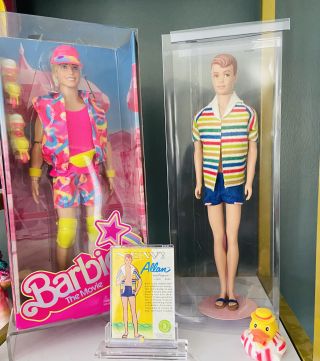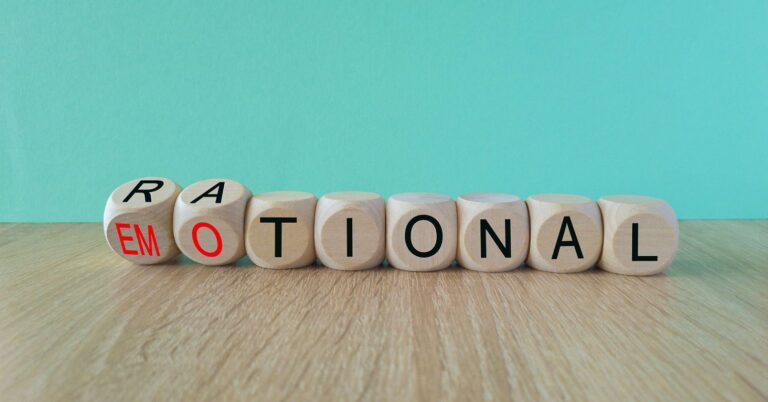
Allan doll (1964) and Barbie: The Movie Ken doll (2023)
Source: Peter Andrew Danzig
There is a joyful simplicity to seeing a movie. Many of us create memories with loved ones as we settle in to watch the opening credits of a film, indulge in its story, and blink our eyes as the theater lights come up, bringing us back to reality. But sometimes a movie’s storytelling helps us realize that there is more to this experience than just the memories we’re building while watching the film. What happens when the theater is full of people in costume, repeat attendees, and a flurry of cross-cultural intersections that allow us to consider our own lived experiences and celebrate our differences? Research has long spoken to the positive effects of film culture on mental health, and one particular area of this research I find personally and professionally intriguing is the effects of cultural attendance and public mental health.
Since 2020, we’ve all wrestled with our mental health amidst a global pandemic. After prolonged isolation, our ability now to sit in a movie theater together might be considered a form of community engagement and cultural attendance. I recently attended the Barbie movie, to view through my lens as a geek therapist and toy analyst. I was curious about this film’s messaging, and how it would engage the audience. As I looked around the theater, the composite of moviegoers was invigorating. Audience members were proudly wearing pink, hats, and boas, adults were holding Barbie dolls, children were asking parents about the toys they had played with, and as I listened to the cacophony of comments and laughter, I was stunned.
Diverse as it was, this audience felt remarkably in tune with statements such as, “I am Kenough,” and, “Barbie is all these women. And all these women are Barbie.” (Barbie: The Movie, 2023) I watched as parents directed children to their seats and smiled as I noted male-identifying moviegoers holding dolls proudly. I already felt seen and affirmed, though I had yet to see the film myself. “How curious,” I thought as I considered my work as a gender-queer clinician and my own lived experience with dolls and negative stereotypes in childhood. Here in 2023, Barbie: The Movie was shifting the ways we consider play, toy culture, and gender expression.
In my clinical practice, pop culture is inextricably linked to geek therapy treatment. Over the years, I’ve had clients share stories on how their interests in certain toys that were gendered in social circles as “boy toys” or “girl toys” left them feeling othered and unaffirmed. Those same clients are now walking into my office, excited to discuss the ways this film has shifted our cultural landscape into more inclusive practices. It has encouraged clinicians, toy companies, and our society at large to ask new questions about the ways we try to fit people into a box, much like the pink cardboard and plastic one that Barbie needed to leave to find her humanity.
The film ended, and I wept with pride as I noted that pop culture often leaves imprints on us long after the trendy moments. It shifts perspectives, and not always for the better. However, as I looked around a sold-out theater with diverse cultural attendance, both in the diversity of attendees and diversity of thought, I smiled. I felt joy for both my inner child and their love of dolls, and also for the generations of children and adults that see toys as more than just toys. Toys invite us to play in a way that we can authentically find our own version of “Kenough.” I hope that the Barbie film’s story does positively affect cultural attendance and public mental health. How could it not, with its assertion that we can freely express ourselves, our needs and wants, and dare I say, discover that we are more than the ideas and impressions others assume of us?
Representation matters, always, and so do the ideas that lead to more inclusive practices or shifts in cultural humility. Toys are not just toys; they are gateways to imagination. They are an invitation to express ourselves and our deepest desires. They are creativity incarnate. Barbie: The Movie fully embraces this notion, and celebrates it on the silver screen with a worldwide audience.
The clinical implications of affirmation in geek therapy are rooted in our ability to help our clients unlearn internalized messaging that doesn’t allow them to feel congruent with their lived experience. A toy, in geek therapy, is never just a toy. It is a goldmine of expression and tales of growing up. My work and research are only effective if I can level the playing field, and help my clients find their way towards self-acceptance through their hardships. Yet even geek therapy needs assistance for us to push towards self-acceptance, and that is where popular culture sometimes aids us in our work. It allows us to consider infinite ideas.
As I write this, I’m looking at a vintage first edition Allan doll, produced in 1964. He is smiling as he looks towards his left. To his right is a Ken doll, produced in 2023. I wish that as a child I, like many of my clients, could have felt permission to know that they “were enough.” But ideas take time to germinate and grow, and I look forward to a more affirming world where we shift our cultural norms through new ideas, and ways of supporting one another.
As the Barbie movie says:
“Humans only have one ending. Ideas live forever.”
May the idea that we all are enough be the seed of healing.


















+ There are no comments
Add yours